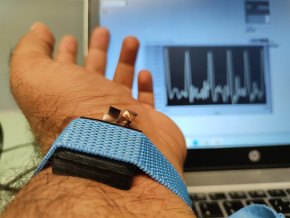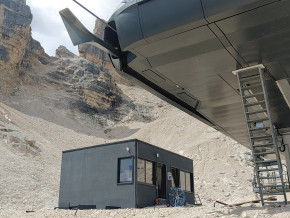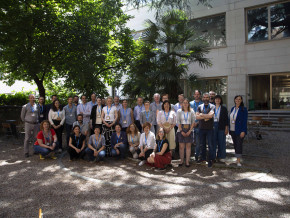Could Social Network Analysis be a useful tool to disarticulate criminal networks?
Organized crime, terrorist groups, street gangs. Reconstructing criminal networks and getting to know their members and hierarchies are the most difficult challenges for law enforcement agencies all over the world. Why? Because there is a lack of data and those that do exist are often not very significant. Two studies by Antonio Liotta, Professor of Data Science at the Faculty of Computer Science and Technology at the Free University of Bolzano-Bozen, in Italy, and some of his Italian and English colleagues, have shown how Social Network Analysis can help justice to target and dismantle the most dangerous and powerful criminal associations.
Finding the broken link in the criminal networks that bind economies and societies is a gigantic task that often leads the investigative actions of the police and judiciary up a blind alley. The ability to reconstruct the warp and woof of the relationships that keep members of a criminal organization together is one of the most delicate and complicated actions that has to be carried out by law enforcement agencies. Nonetheless, advancements in the field of information technology and data analysis may be used to effectively deal with organized crime.
Prof. Antonio Liotta, an expert in Big Data analysis and complex networks and professor of Data Science at the Faculty of Computer Science and Technology of the Free University of Bolzano-Bozen (Italy), is the author, together with colleagues from different universities (University of Messina, University of Palermo, University of Derby, Shanghai Ocean University, Edinburgh Napier University), of two studies – Disrupting resilient criminal networks through data analysis: The case of Sicilian Mafia (on the PLOS ONE Journal) and Criminal Networks Analysis in Missing Data scenarios through Graph Distances – in which modern graph analysis techniques are applied to criminal networks.
The missing data problem
It is not easy to apply the science of Data Analysis to the investigation of criminal organizations because most of the data is missing. For more than obvious reasons, there are no large databases describing their composition and internal structure, and data in investigative and judicial records are difficult to access. “Whoever is part of the criminal world modifies the data on purpose, makes them opaque, unintelligible”, says Liotta, “let's think, for example, of the “pizzino”, the small slips of paper that the Sicilian Mafia uses for high-level communications, or of the affiliates used by mafia bosses to communicate with other people. When they listen to a tapped telephone, investigators hear the voice of the intermediaries and not of the real boss and so they struggle to identify the real instigator of a crime. There are also other cases in which the boss, for example, talks to a person – say, for instance, the baker – who is not a member of the criminal network”.
It has been ascertained that criminal networks, from a structural point of view, trace the biological neural networks that are the most efficient ones in the passage of information from node - neuron - to node. In both cases, the networks are “small world” and “scale free”, which allow them to form short paths even when the networks are large and complex. It is no coincidence that anti-mafia judge Giovanni Falcone – who was murdered in a bomb attack in 1992 – defined those who, at the top of organized crime, decide its strategies as “very refined minds”.
So how is it possible to distinguish between those who have a leading role, a subordinate one and those who do not belong to a criminal association? Understanding the role played by each node of the network is fundamental because, according to its importance, the police can then decide the type of action to undertake: whether that be a single arrest or a raid. This is the kind of choice that, if wrong, can make it even more difficult to isolate and capture the high profile figures in a criminal organization. What can be done, and what Liotta and his colleagues from the University of Messina and the University of Derby have done, is to overturn the perspective and use another analysis technique: that of social networks.

The criminal network of two Sicilian clans reconstructed as a Knowledge Graph
In the first scientific paper, Disrupting resilient criminal networks through data analysis: The case of Sicilian Mafia, Liotta, and his colleagues reconstructed how the network of relationships of a Mafia clan works. In order to do so, they worked on a real judicial case: they sifted through and manually copied all the data contained in thousands of pages from the acts of the trials against members of the “Mistretta” Mafia family and of the “Batanesi” clan, who had been arrested as part of Operation Montagna in the early 2000s and then sentenced by the Court of Messina. Starting from the two datasets created - and based on wiretaps and stakeouts – they used an algorithm to create a knowledge graph that represented the criminal network of the two clans. Once they had obtained a graphical representation, the topological analysis allowed them to see interactions between the different nodes that would not appear obvious at first glance, and in this way, they could understand the flow of information and interactions between the various affiliates. The researchers used a metric called Betweenness Centrality that enabled them to evaluate the nodes that play a decisive role in the spreading of information between different segments of the network (the bridge’s nodes). Once these nodes have been identified, targeted attacks can take place in order to weaken the entire network more effectively. This metric does not necessarily measure the shortest path, but the most effective one, which makes it possible to achieve the intended purpose of identifying the person who issues the order to commit a crime, such as murder. Understanding which nodes are fundamental to the graph (those with a higher Betweenness Centrality measure) can help police forces in their decisions concerning who to arrest, and when, and whether to hit several nodes at once by targeted raids.
“By doing so, they can maximize the ability to reduce any communication across the network even if the police do not succeed in arresting the boss because he does not show up in the network except through trusted intermediaries”, Liotta explains, “if you isolate key elements, you give law enforcement time to go after the boss. This way we can minimize the boss’s ability to restore his criminal network.”
The second research path
Liotta and colleagues’ papers have sparked interest in those within the academic sector in the United States who study Mafia criminal networks on American soil. “Some colleagues have asked us for our samples of criminal networks and are doing comparative studies with U.S. datasets”, Liotta says. “We have tried to make a similar request to other organizations in other countries and it has been virtually impossible. Anyway, we are willing to broaden our research horizon to different organizational forms.”
To a certain extent, Liotta and colleagues have already done so with a second paper: Criminal Networks Analysis in Missing Data scenarios through Graph Distances. In this paper, the authors compared nine different criminal networks: not only the Sicilian Mafia, but also ‘Ndrangheta clans (from the Italian Region of Calabria), drug trafficking groups from Quebec, Stockholm street gangs, and terrorists from the Abu Sayyaf group, in the South of the Philippines. Based on data provided by those who had made knowledge graphs of the aforementioned organizations, Liotta and colleagues created algorithms that allow them to generate a “synthetic” criminal network that can be tailored to any organization about which they have little information. “Thanks to these algorithms, we are able to create a kind of approximation, a model of the network we want to dismantle, and then we discover the best operational strategies to unmask key individuals so as to slow down the passage of information between nodes”, he clarifies.
Although the findings from the use of these algorithms allow us to refine the search for hidden nodes in the networks, there is still a lot of work to be done in order to create tools that can be quickly used by police forces all over the world. The effectiveness of these methodologies is directly linked to the availability of operational data, which are typically protected due to the secrecy of the investigation. Prof. Liotta is already working with various research groups on the development of techniques for the anonymization of sensitive data, in order to create more direct collaboration between the university and the special investigation divisions of the police.
Related Articles

Tecno-prodotti. Creati nuovi sensori triboelettrici nel laboratorio di sensoristica al NOI Techpark
I wearable sono dispositivi ormai imprescindibili nel settore sanitario e sportivo: un mercato in crescita a livello globale che ha bisogno di fonti di energia alternative e sensori affidabili, economici e sostenibili. Il laboratorio Sensing Technologies Lab della Libera Università di Bolzano (unibz) al Parco Tecnologico NOI Techpark ha realizzato un prototipo di dispositivo indossabile autoalimentato che soddisfa tutti questi requisiti. Un progetto nato grazie alla collaborazione con il Center for Sensing Solutions di Eurac Research e l’Advanced Technology Institute dell’Università del Surrey.

unibz forscht an technologischen Lösungen zur Erhaltung des Permafrostes in den Dolomiten
Wie kann brüchig gewordener Boden in den Dolomiten gekühlt und damit gesichert werden? Am Samstag, den 9. September fand in Cortina d'Ampezzo an der Bergstation der Sesselbahn Pian Ra Valles Bus Tofana die Präsentation des Projekts „Rescue Permafrost " statt. Ein Projekt, das in Zusammenarbeit mit Fachleuten für nachhaltiges Design, darunter einem Forschungsteam für Umweltphysik der unibz, entwickelt wurde. Das gemeinsame Ziel: das gefährliche Auftauen des Permafrosts zu verhindern, ein Phänomen, das aufgrund des globalen Klimawandels immer öfter auftritt. Die Freie Universität Bozen hat nun im Rahmen des Forschungsprojekts eine erste dynamische Analyse der Auswirkungen einer technologischen Lösung zur Kühlung der Bodentemperatur durchgeführt.

Gesunde Böden dank Partizipation der Bevölkerung: unibz koordiniert Citizen-Science-Projekt ECHO
Die Citizen-Science-Initiative „ECHO - Engaging Citizens in soil science: the road to Healthier Soils" zielt darauf ab, das Wissen und das Bewusstsein der EU-Bürger:innen für die Bodengesundheit über deren aktive Einbeziehung in das Projekt zu verbessern. Mit 16 Teilnehmern aus ganz Europa - 10 führenden Universitäten und Forschungszentren, 4 KMU und 2 Stiftungen - wird ECHO 16.500 Standorte in verschiedenen klimatischen und biogeografischen Regionen bewerten, um seine ehrgeizigen Ziele zu erreichen.

Erstversorgung: Drohnen machen den Unterschied
Die Ergebnisse einer Studie von Eurac Research und der Bergrettung Südtirol liegen vor.
